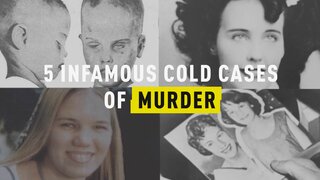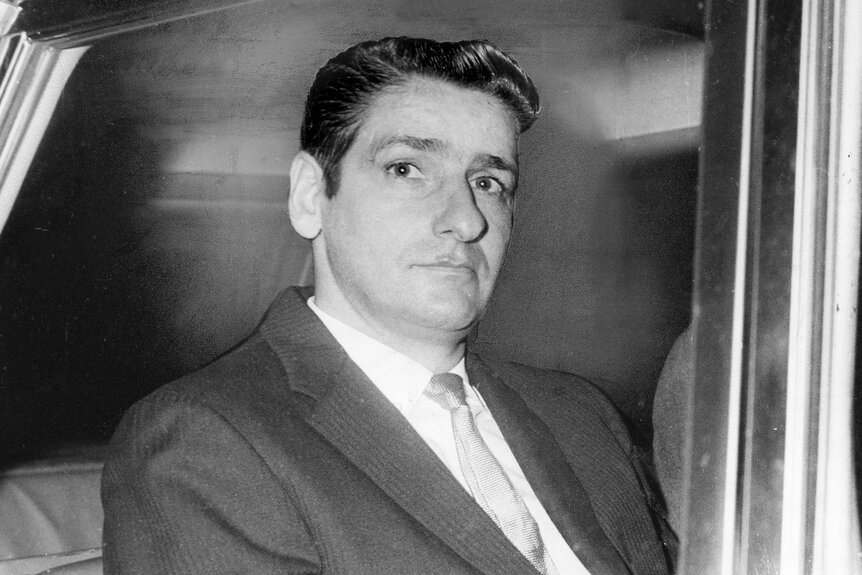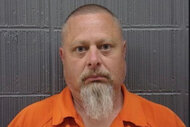Create a free profile to get unlimited access to exclusive videos, breaking news, sweepstakes, and more!
Who Was Albert DeSalvo, The Purported Boston Strangler?
Fear surged through Boston in the 1960s when a killer began targeting single women, sexually assaulting and strangling them to death, before leaving the ligatures still tied around their necks.

In the early 1960s, fear tore through Boston and its surrounding suburbs as a serial killer and rapist targeted unsuspecting single women.
The victims — who ranged in age from 19 to 85 — were often found inside their homes with nylons tied around their neck and no signs of forced entry, suggesting whoever killed the women had somehow gained their trust, according to All That’s Interesting.
Although the crimes were spread out across Boston and its surrounding suburbs from 1962 to 1964, investigators believed the 11 murders were linked to the same killer, who became known in the media as the “Boston Strangler.”
Their suspicions were seemingly confirmed in 1965 when Albert DeSalvo, a factory worker and inmate at a psychiatric hospital, confessed to killing the 11 women and two others, according to The Boston Herald.
He was sentenced to life in prison more than 50 years ago on Jan. 18, 1967 for a string of unrelated crimes but was never formally charged with the murders, leaving some to still question whether DeSalvo, who was killed behind bars just six years later, was responsible for all of the killings credited to the Boston Strangler.
The terror began on June 14, 1962 when 55-year-old seamstress Anna Slesers was found strangled to death in her apartment, according to Boston Magazine. Her adult son stumbled upon Slesers’ body lying on the kitchen floor, with the belt of her housecoat tied around her neck.
The habit of leaving his victims with the rope or cord he used to kill them became a calling card for the killer, according to History.com. Over the next two years, 12 more women were raped and killed in Boston and surrounding communities across multiple jurisdictions.
While all of the victims were single, they lacked any other unifying characteristic to help investigators track down the killer. The victims were students, nurses, physiotherapists and other professionals, ranging in age, background and neighborhood.
Authorities got the break they needed in 1965, when DeSalvo was being housed in the Bridgewater State Hospital and confessed to the slayings.
RELATED: Who Was Black Dahlia Murder Victim Elizabeth Short?
DeSalvo was believed to be a seasoned criminal with a violent childhood. His father was allegedly known to bring home prostitutes and have sex with them in front of the family, according to History.com.
He allegedly physically beat his wife and children, once even knocking DeSalvo’s mother’s teeth out and then breaking her fingers as she lay unconscious on the floor.
“As a child he was cruelly, blatantly mistreated, that he was exposed to the most deviate conduct,” attorney F. Lee Bailey told a court in 1967, according to an article in The Boston Globe that year.
According to Bailey — who would go on to represent famous clients like O.J. Simpson and Patricia Hearst — DeSalvo had displayed “extreme cruelty” to animals from an early age and was taught to shoplift when he was just 6 years old.
His life gained some structure when he joined the U.S. Army, eventually becoming the middleweight boxing champion of the U.S. Army in Europe during his tour of duty. He married a woman from Germany and had two children, according to The Boston Globe.
But his criminal exploits continued back in the United States in the late 1950s when he became known as the “Measuring Man.” DeSalvo would knock on the doors of young women and claim to be from a modeling agency, asking to take the women’s measurements. Rather the help the women with any modeling ambitions, he’d fondle them.
He was arrested in 1960 and sent to the House of Correction in Billerica, Bailey said at the time.
When he was released from prison, his criminal behavior continued. DeSalvo was suspected of breaking into hundreds of apartments across New England and sexually assaulting women. He earned the nickname the “Green Man” because he often wore green handyman clothes.
In October of 1964, DeSalvo allegedly broke into the home of a 20-year-old Cambridge woman, threatened her with a knife and sexually molested her after tying her up, The Hartford Courant reported in 1999. The woman later helped police create a sketch of the suspect and law enforcement recognized that the man looked a lot like the “Measuring Man.”
RELATED: Man Murders Wife On New Year's Eve And Stages It To Look Like An Accident
DeSalvo was arrested and while being held in a prison for the criminally insane, he began confessing to crimes attributed to the “Boston Strangler.”
Notably, DeSalvo confessed to Bailey — who had been serving as a defense attorney for a fellow inmate at the prison named George Nassar. He taped the confession and provided it to the Boston Police, according to the paper.
Bailey also agreed to represent DeSalvo in the assault, robbery and sex offense charges he was facing in connection with the “Green Man” crimes. Bailey’s strategy was to publicly profess in court that DeSalvo was, in fact, the Boston Strangler — although he had not been charged with those murders — and argue that his client should be found not guilty by reason of insanity.
Psychiatrist Dr. James Brussel testified in the trial that DeSalvo told him he used to pose as a repairman to gain entry into the women’s apartments before attacking them when their back was turned, as a “feeling of hatred” surged through him, according to the 1967 account in The Boston Globe.
“These little fires and little explosions would mount up to a pitch where he resorted to that expression of strength that he had shown while he was in the Army in Germany,” Dr. Brussel said.
According to the doctor’s account, DeSalvo then choked the women until they lost consciousness, sexually assaulted them, and then strangled them to death with some type of ligature.
The legal strategy in court seemingly backfired and DeSalvo was found guilty and sentenced to life in prison for the “Green Man” crimes.
While DeSalvo initially admitted to the “Boston Strangler” killings, he later recanted his confession and there was no physical evidence to link him to the crimes, causing many to question whether he was the real killer.
Six years after his conviction, DeSalvo was found dead in his cell bed after being stabbed multiple times at Walpole State Prison on Nov. 27, 1973, according to a New York Times article that year.
DeSalvo, who was 42 at the time, was suspected of being involved in drug trafficking at the prison.
“We don’t know if this murder is drug-connected. It’s possible ... anyone who deals in drugs has enemies, because its competitive,” then-Norfolk County District Attorney George Burke told the news outlet.
It initially seemed that DeSalvo’s death took with it any possibility to learn more about his alleged connection to the Boston Strangler killings, but investigators caught a break in 2013 as a result of DNA advances.
DNA recovered from the body of the last Boston Strangler victim, Mary Sullivan, was found to match DeSalvo, according to CNN.
Sullivan, 19, was found dead in her Charles St. apartment in Boston on Jan. 4, 1964. She had been sexually assaulted and strangled.
RELATED: Louisiana Police Informant Raped Twice During Undercover Drug Buy Sues Department
Decades after the murder, investigators compared the DNA found on a maroon blanket at the crime scene to DNA taken from a water bottle discarded by DeSalvo’s nephew, ABC News reported.
After receiving a familial match, investigators got permission to exhume DeSalvo’s body to extract his DNA and got a long-awaited match.
“I hope this brings some measure of finality to Mary Sullivan’s family,” then-Massachusetts Attorney General Martha Coakley said, according to NECN. “This leaves no doubt that Albert DeSalvo was responsible for the brutal murder of Mary Sullivan, and most likely that he was responsible for the horrific murders of the other women he confessed to killing.”
The seminal fluids left behind at the Sullivan murder scene were the only remaining DNA evidence in the Boston Strangler investigation, making it difficult for authorities to positively confirm DeSalvo’s connection to the other killings linked to the notorious Boston serial killer.
Yet many, including Bailey who spoke out about the case before his death in 2021, believe DeSalvo was likely behind the heinous killings.
“I think it brings closure to the family of Mary Sullivan and the people who have been concerned,” Bailey told WMTW in 2013. “The killer is not still out there. Indeed, he died in 1973, tragically, before we could find out what it was that made him tick.”























